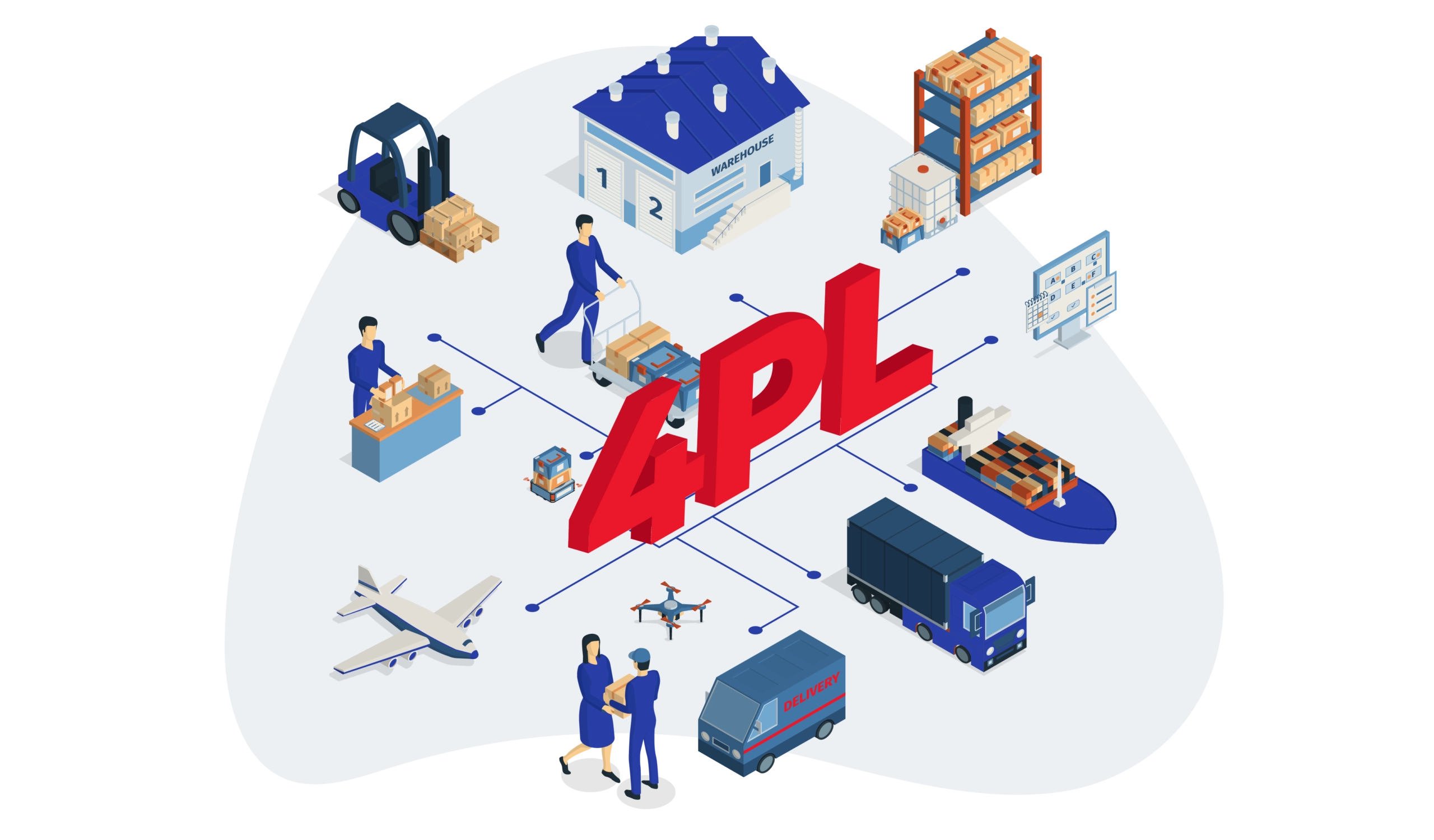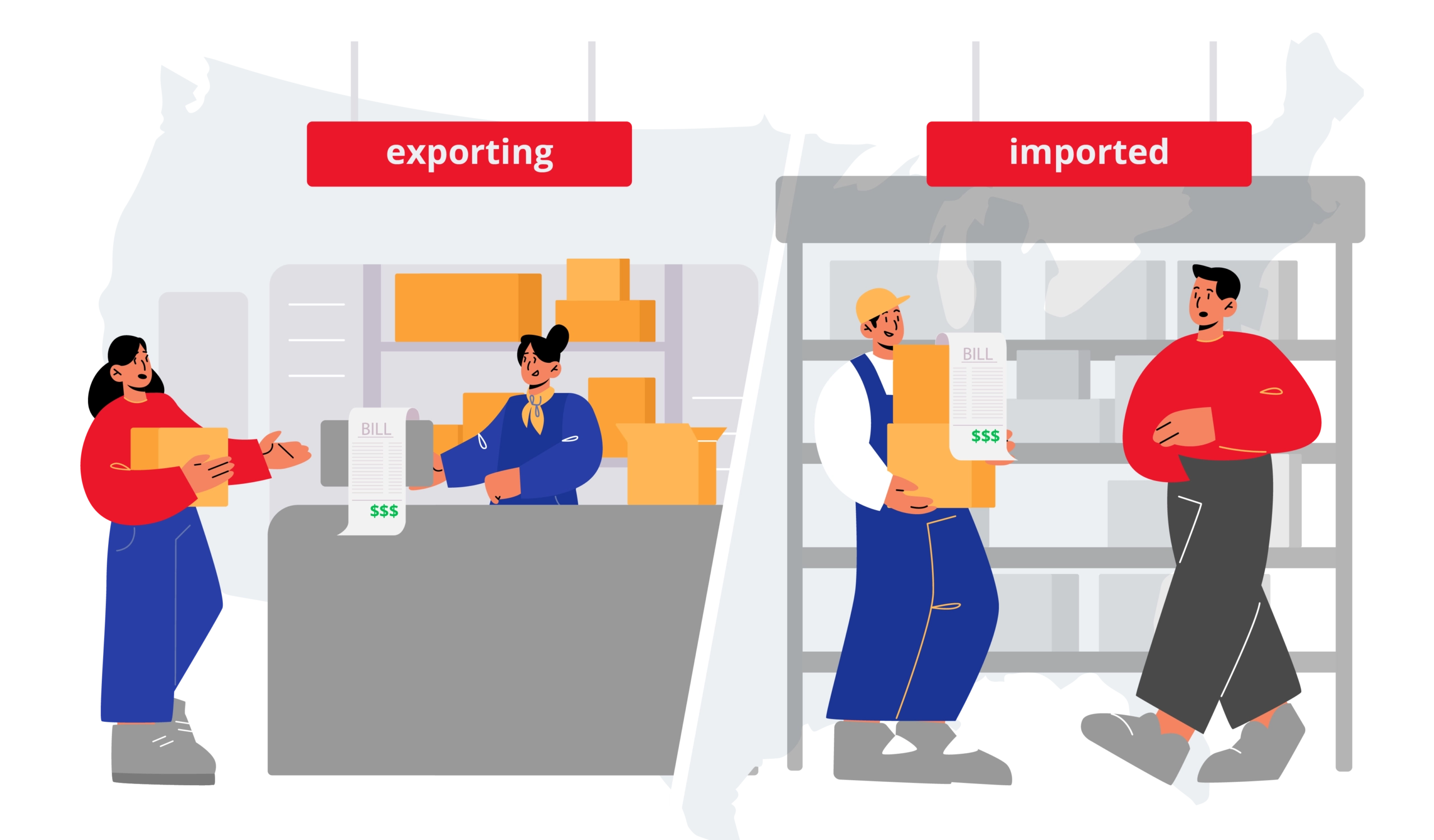Multi-Carrier Shipping: Everything You Need To Know

The rise of eCommerce has introduced numerous dynamic shipping methods, such as multi-carrier shipping. While it has numerous benefits, especially in ensuring the efficiency of your last-mile deliveries, managing multiple carriers into a unified system can be challenging.
In this blog, we’ll go through the evolution, principles, advantages, challenges, and future trends of multi-carrier shipping, offering a comprehensive guide to navigating this essential aspect of modern logistics.
The Significance of Efficient Shipping: Statistics You Need to Know
Efficient shipping has always been essential in the business industry, but the growth of eCommerce has pushed its limits. While same-day deliveries used to be just a competitive advantage among businesses, it has become a paramount service today.
Here are some of the key statistics about the consumer landscape today:
1. Global Same-Day Delivery Market Projection:
- The Global Same Day Delivery market, valued at USD 6446.49 Million in 2022, is poised to reach an impressive USD 13262.52 Million by 2028, exhibiting a robust Compound Annual Growth Rate (CAGR) of 12.78% during the period spanning 2022-2028.
2. Same-Day Shipping Landscape:
- A noteworthy 51% of retailers have already integrated same-day shipping into their services.
- Anticipating the demand, an additional 65% of businesses have strategic plans to implement same-day shipping within the next two years.
- 20% of retailers offer not just same-day delivery but deliveries within a few hours.
3. Consumer Urgency for Swift Deliveries:
- A striking 80% of shoppers actively seek same-day shipping.
- Even more demanding 61% desire packages delivered within a mere 1-3 hours of placing an order, underlining the paramount nature of expedited services.
- 90% of US consumers expect their orders would be delivered within 2-3 days.
4. In-Transit Issue Resolution Expectations:
- A staggering 95% of eCommerce consumers expect swift resolution of their shipping-related issues while the items are in transit.
5. Consumer Sentiment on Speed of Delivery:
- A notable 15% of US consumers express contentment, stating that online retailers consistently meet their expectations regarding the speed of delivery.
6. Impact of Delivery Transparency:
- Demonstrating the significance of clear communication, 53% of US online shoppers declare their reluctance to purchase a product if they lack information about its expected arrival time.
7. Free Shipping as a Prime Motivator:
- Despite the importance of fast shipping, 49.7%, of individuals affirmed that free shipping remains the primary motivator for their online shopping endeavors.
These statistics underline the critical role of efficient shipping in contemporary commerce, where speed, transparency, and consumer-centric services reign supreme.

Evolution of Shipping Strategies: From Single Carrier to Multi-Carrier Shipping
The shift from single-carrier to multi-carrier shipping in business logistics has been propelled by the changing dynamics of the digital marketplace and evolving consumer expectations.
Traditionally, exclusive contracts with individual carriers provided consistent costs and reliable delivery timelines. However, this approach fell short in meeting the diverse demands of modern manufacturing and retail fulfillment and the need for enhanced flexibility.
Multi-carrier shipping now offers businesses strategic advantages, including cost savings, increased flexibility, and the ability to negotiate better rates. The global nature of e-commerce further emphasizes the importance of multi-carrier strategies, with innovations in shipping software playing a crucial role. Embracing flexibility through multi-carrier shipping appears to be a key element in navigating the complexities of last-mile delivery and meeting the evolving needs of the market.
Understanding Multi-Carrier Shipping and Multi-Carrier Solutions
At its core, multi-carrier shipping is a B2B logistics operation that involves utilizing multiple carriers to deliver packages. Unlike traditional methods, this approach allows businesses to compare rates, transit times, and routes, optimizing the selection of carriers based on specific package requirements.
Multi-carrier shipping solutions, such as those offered by ClickPost and Aftership, use advanced technologies like AI-driven engines and API integrations to streamline the order creation, tracking, and management processes.
Advantages of Multi-Carrier Shipping
While it may be challenging to implement, multi-carrier shipping brings numerous advantages to businesses that can directly affect revenue generation. Here are some of the benefits enjoyed by companies using multi-carrier shipping:
1. Cost Optimization
Multi-carrier shipping provides the flexibility to compare rates across carriers, ensuring businesses choose the most cost-effective option for each shipment. This approach allows for better negotiation of shipping rates and takes advantage of carrier discounts and promotions.
2. Improved Delivery Speed
With access to various carriers and shipping services, businesses can optimize delivery times based on specific customer needs. This flexibility ensures faster deliveries for urgent orders and cost-effective options for less time-sensitive shipments.
3. Increased Flexibility
Multi-carrier shipping platforms offer a range of delivery services on a single platform. This flexibility allows businesses to cater to diverse customer needs, offering options for both fast and affordable shipping based on the nature of the products and customer preferences.

Challenges and Considerations of Multi-Carrier Shipping
Despite these numerous advantages, businesses must also learn to navigate challenges and considerations:
1. Integration Complexity
Integrating multiple carriers and managing diverse shipping APIs can be complex. Businesses need robust infrastructure to seamlessly connect with various carriers and streamline the shipping process.
2. Technology Requirements
Successful implementation of multi-carrier shipping requires advanced technological solutions. Businesses must invest in systems that support last-mile automation, real-time tracking, and efficient order management to harness the full benefits of multi-carrier strategies.
3. Effective Management
Coordinating shipments across multiple carriers demands effective management. Businesses must establish protocols for order creation, tracking, and issue resolution to ensure a seamless and error-free shipping process.
Factors to Consider When Implementing Multi-Carrier Shipping: Optimizing Your Strategy
When contemplating the implementation of a multi-carrier shipping strategy, businesses must carefully evaluate several key factors to ensure a seamless and effective transition. These factors play a pivotal role in determining the success and efficiency of your shipping operations.
1. Shipping Volume
Assessing your shipping volume is a fundamental step in adopting a multi-carrier approach. Creative Logistics Solutions identify tiers to help you determine the most suitable strategy based on your daily shipment quantities:
– 2,000 to 500,000 packages per day: Multi-carrier shipping services
– 1-10,000 packages per day: Single carrier, but large-scale logistics providers such as UPS, FedEx, DHL, and USPS with web-service APIs
– 1-1,000 packages per day: Single-carrier regional logistics services with or without local software.
For businesses with varying shipment quantities, understanding the volume dynamics helps in choosing carriers that can accommodate fluctuating demands.
High shipping volumes may benefit from the negotiation power and capacity of multiple carriers, while smaller volumes may find a single-carrier approach more manageable.
2. Diversity of Products
Your product range profoundly impacts the suitability of a multi-carrier strategy. If your business handles diverse products with varying sizes, weights, and shipping requirements, utilizing multiple carriers enables you to pair specific products with carriers that excel in handling their unique characteristics.
For instance, specialized industries like healthcare should opt for multi-carrier shipping. Experts emphasize that traditional shipping methods fall short, and delays in medical supplies can lead to severe consequences. Multi-carrier operation implements optimized shipping processes that can cater to the special needs of your healthcare products.
3. Geographical Reach
Understanding the geographical spread of your customer base is paramount. Multi-carrier shipping facilitates the selection of carriers with specialized regional strengths.
For businesses catering to both domestic and international markets, adopting a multi-carrier operation is almost imperative. Similarly, businesses operating within 250-400 miles are also recommended to implement a multi-carrier operation as it ensures efficient deliveries.
4. Specialized Supply Chain
The viability of multi-carrier operations can be contingent on your current supply chain setup. Manufacturing businesses engaged in Direct Store Delivery (DSD) can maximize the benefits of multi-carrier shipping. This approach facilitates efficient product dispatch, enabling partners to guarantee timely and reliable deliveries.
This is especially critical for maintaining product freshness and meeting consumer demand, aligning with the unique requirements of DSD in the manufacturing sector.

Future Trends in Multi-Carrier Shipping
As we look ahead to 2024, several trends and technological innovations are poised to reshape the multi-carrier shipping landscape:
1. Blockchain Integration
Blockchain technology is anticipated to enhance the transparency, security, and efficiency of shipping operations. Recent research suggests that blockchain can simplify multi-carrier shipping, allowing SMEs to also enjoy the benefits of the said logistics method.
Unsurprisingly, countries are not shying away from developing blockchain solutions for delivery orchestration as a survey from Statista shows that the worldwide spending on blockchain solutions is now at 15.9 billion dollars. Within a year or two, we might be able to see blockchain tools that can effectively streamline tracking, reduce fraud, and provide a trustworthy system for all stakeholders in the shipping process.
2. Sustainable Shipping Practices
Research from Coyote Logistics reveals that 81% of companies are more focused on sustainability within their supply chain. This isn’t surprising, as 66% of consumers today say they consider sustainability when making a purchase.
With this in mind, multi-carrier shipping providers are likely to adopt eco-friendly practices, including optimized routes, alternative fuels, and reduced carbon emissions, aligning with global sustainability goals. Furthermore, numerous logistics providers are now using electric delivery trucks for their last-mile delivery, so multi-carrier shipping is expected to integrate these kinds of vehicles shortly.
3. Enhanced Customer Communication
In 2024, customer communication is expected to reach new heights. Multi-carrier shipping solutions will leverage advanced communication channels, such as chatbots and real-time notifications, to keep customers informed about their shipments, delivery times, and potential delays.
4. Artificial Intelligence (AI) and Machine Learning (ML)
58% of logistics companies expect AI to become widely used and take over many tasks in logistics. The implementation of AI and ML technologies can optimize various aspects of multi-carrier shipping, from route planning and warehouse management to predictive analytics for demand forecasting.
Data-driven AI and ML technologies can enhance the planning and decision-making processes of businesses implementing multi-carrier shipping processes. Not only will it maintain its efficiency, but even explore other opportunities to scale its operations.
5. Customized Shipping Solutions
Future trends may lean towards more personalized and flexible shipping solutions. Multi-carrier shipping providers might offer tailored services based on customer preferences, such as specific delivery time windows, eco-friendly options, or packaging choices. This customization can lead to increased customer satisfaction and loyalty.
Single Carrier or Multi-Carrier Shipping: Which One Is Better for Your Business?
Selecting between single or multi-carrier shipping is a strategic choice that requires a deep understanding of your business dynamics. While the flexibility and efficiency of multi-carrier solutions make them an attractive option, individual business requirements may vary.
To ensure a well-informed decision, engaging with an expert logistics provider becomes instrumental. Their expertise can help analyze your shipping volume, target markets, and product characteristics, guiding you toward the most fitting logistics operation. Collaborating with a logistics professional ensures that your chosen shipping strategy aligns seamlessly with your business goals, optimizing efficiency and customer satisfaction.

Why should Dropoff become a part of your multi-carrier shipping strategy?
Selecting Dropoff as a part of your multi-carrier shipping strategy ensures seamless integration with your operations, providing customized solutions that contribute to efficiency. Specializing in logistics management for same-day deliveries, Dropoff brings a wealth of expertise across various industries, including retail, industrial, and healthcare. This industry-specific knowledge guarantees the optimization of your unique shipping requirements.
Dropoff’s commitment to on-time delivery, backed by reliable logistics software with scalable solutions for businesses of all sizes, instills confidence in your supply chain. The real-time tracking feature further enhances visibility, empowering you to monitor and manage shipments effectively throughout the entire shipping process. In essence, Dropoff stands out as a same-day delivery provider by offering comprehensive solutions, industry expertise, and a commitment to reliable, on-time delivery.
Final Thoughts
Multi-carrier shipping has become a cornerstone in the realm of efficient logistics for businesses of all sizes. Navigating the complexities of shipping demands a strategic approach that combines cost optimization, delivery speed, and flexibility. As technology continues to advance, businesses can stay ahead of the curve by embracing emerging trends in blockchain integration, sustainable practices, and enhanced customer communication.
Choosing a reliable multi-carrier shipping provider, such as Dropoff, ensures businesses can meet the challenges of the modern shipping landscape with confidence.
Multi-carrier shipping refers to a logistics strategy where businesses utilize multiple carriers to fulfill their shipping needs instead of relying on a single carrier. This approach offers flexibility, cost optimization, and improved delivery performance by leveraging the strengths of different carriers.
Multi-carrier shipping software is a technology solution that enables businesses to manage and streamline their multi-carrier shipping operations.
Multi-carrier shipping involves using multiple carriers for package delivery, providing businesses with options to optimize costs and delivery times. In contrast, single-carrier shipping relies on a sole carrier for all shipments, limiting flexibility.
Integration complexity, technology requirements, and effective management are key challenges. Coordinating multiple carriers and managing diverse APIs demand robust systems and protocols for seamless implementation.
Anticipated trends include blockchain integration for transparency, sustainable shipping practices to address environmental concerns, and enhanced customer communication through advanced technologies like AI-driven chatbots and real-time notifications.






